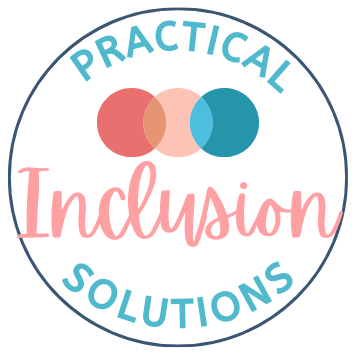As a busy elementary school teacher or special educator, you might have wondered, “I know Assistive Technology could really benefit my students, but where do I even start?” The good news is that Assistive Technology (AT) can be a game-changer in creating more inclusive learning opportunities. It’s designed to support and empower students in various ways, and getting started might be simpler than you think.
What is Assistive Technology?
Assistive Technology includes various devices and software designed to support students with diverse needs, helping them engage more fully with the curriculum and thrive academically. In this blog post, we’ll explore what Assistive Technology is, why it’s important, and assistive technology examples in the classroom for an inclusive and engaging environment.
Why should I use Assistive Technology in my Classroom?
Assistive Technology isn’t just about helping students with disabilities; it’s about creating an inclusive environment where every child has the opportunity to succeed. For students with learning differences, sensory impairments, or physical challenges, Assistive Technology can bridge gaps and level the playing field. For example, I worked with a student with dyslexia who had difficulty accessing group reading activities. She used text-to-speech software to help with reading. She was able to participate meaningfully with her classmates about the content.
Assistive Technology enhances accessibility to the curriculum by providing multiple ways for students to access and engage with the content whether through auditory, visual, or tactile ways. Using Assistive Technology can create personalized learning experiences where students utilize tools that meet their own individual needs, allowing them to learn at their own pace and in their own style. Personalized learning experiences can lead to increased engagement among students, where they can feel successful and find joy in their learning in a way that they are able to participate. These experiences can lead to student empowerment and independence.
This may sound like a teacher’s dream, but you might be wondering, “I know I should use assistive technology, but how do I even begin? Who has time to learn all that and start using it right away?” Just like we’ve discussed strategies for flexible seating and ways to organize your inclusive classrooms, we’re here to guide you step-by-step on how to use assistive technology. Our goal is to help you feel confident in implementing these valuable assistive technology tools in your classroom!
5 Assistive Technology Examples for the Classroom
1. Speech-to-Text:
Speech-to-text technology converts spoken words into written text in real-time. This can be an incredibly useful tool for students with disabilities like hearing impairments, motor difficulties, or dyslexia. It allows for hands-free communication and makes writing tasks more accessible, boosting both productivity and independence. To use it, simply choose a reliable app or software—many devices have built-in options. Speaking clearly and at a steady pace helps ensure accuracy. This technology is vital for fostering inclusivity and empowering students to fully participate in digital communication and classroom activities.
2. Text-to-Speech (TTS):
Text-to-speech (TTS) technology reads written text out loud, offering essential support for students with visual impairments, reading difficulties, or learning disabilities. TTS can be used on smartphones, computers, or e-readers. Once activated, it reads aloud selected text, allowing students to absorb information through listening rather than reading. This tool is important for improving accessibility and comprehension, ensuring that students can engage with learning materials in the way that works best for them.
3. Interactive Whiteboards:
Interactive whiteboards, like SMART Boards, are dynamic tools in elementary classrooms that enhance student engagement and accommodate diverse learning needs. These boards allow students and teachers to interact directly with the display using touch gestures, a stylus, or other tools. Teachers can create interactive lessons that include visual, auditory, and tactile elements, making learning more accessible. For example, students with fine motor challenges can use touch gestures. Students with visual impairments can benefit from enlarged images. Interactive whiteboards promote collaborative learning, helping students actively participate and engage with lessons in a way that suits their individual abilities.
4. Augmentative and Alternative Communication (AAC):
AAC is crucial for students who have difficulties with communication or being understood by others. Basic, low-tech options include an alphabet board or picture choices. High-tech AAC options include communication apps or speech-generating devices. These tools help students express themselves and participate in class activities. Teachers can support AAC use by collaborating with their school’s speech-language pathologist (SLP). Communication boards can be tailored to daily routines or using apps that let students select images or words to communicate. AAC is essential for fostering inclusion, enabling all students to engage in both social and academic activities.
5. Assistive Listening Devices (ALDs):
Assistive listening devices (ALDs), such as FM systems, are essential for students with hearing impairments. ALDs amplify the teacher’s voice and reduce background noise. This makes it easier for students to hear and focus in the classroom. Teachers can use ALDs by wearing a microphone that transmits their voice directly to the student’s hearing device or to a classroom speaker system. These devices are important for ensuring that all students who may have a hearing loss have equal access to learning opportunities and feel included in their learning environment.
Interested in more tips? Check out these articles:
💻 Edutopia: Easy Ways to Bring Assistive Technology into Your Classroom
💻 Inclusive Schools Network: Assistive Technology 101
How do you use assistive technology in your classroom? Share your experiences and tips in the comments or connect with us on Instagram @practicalinclusionsolutions!
